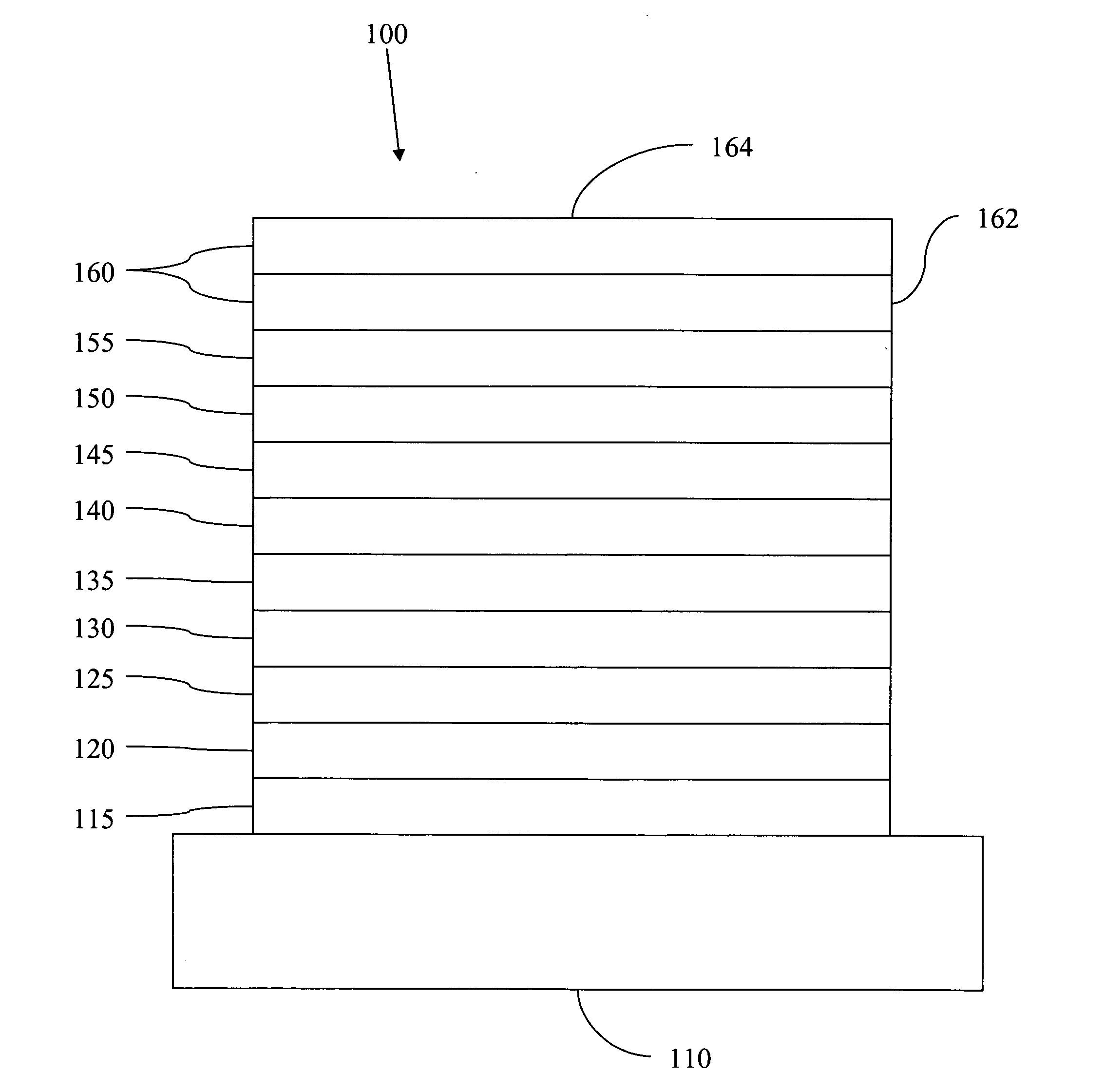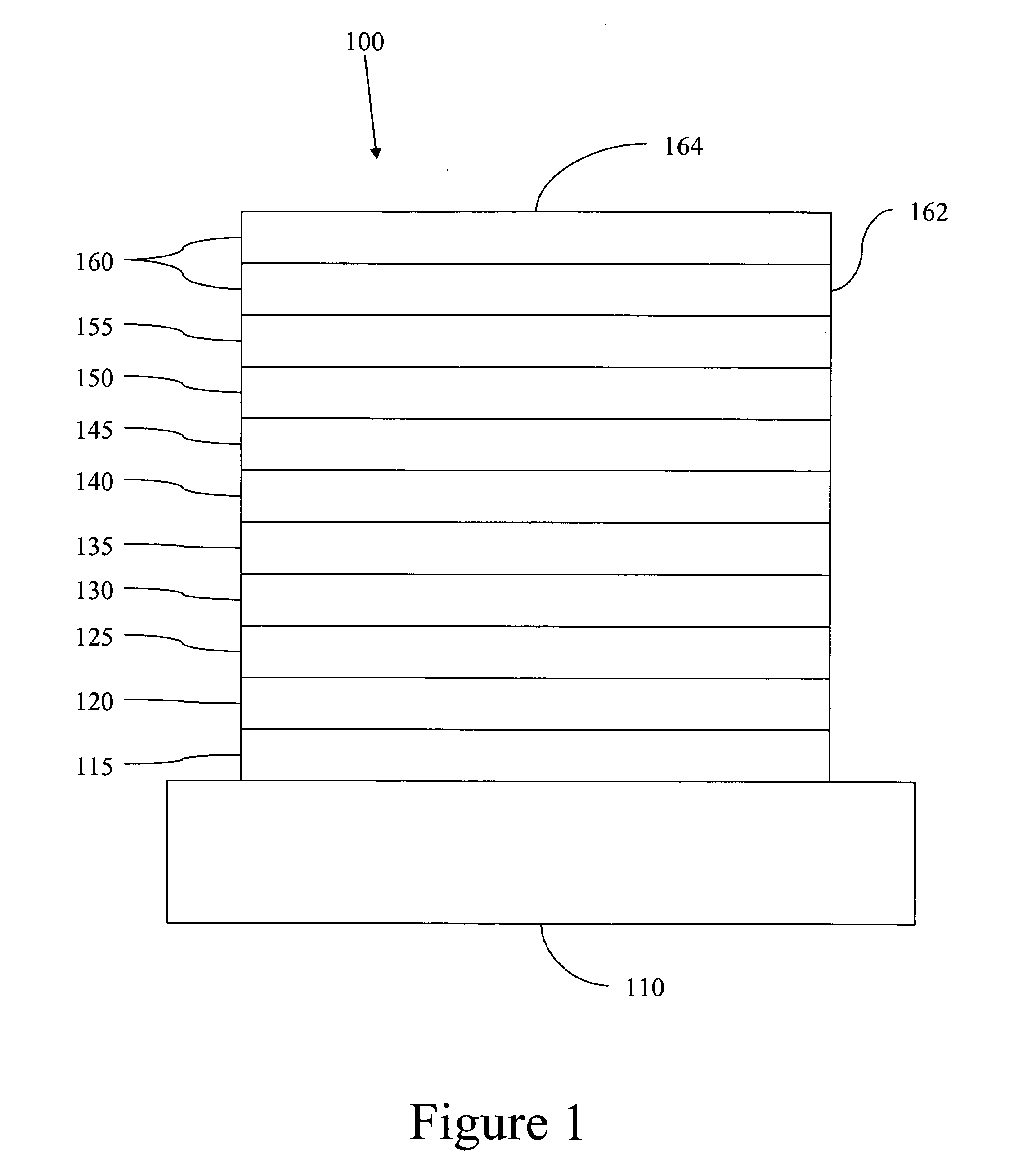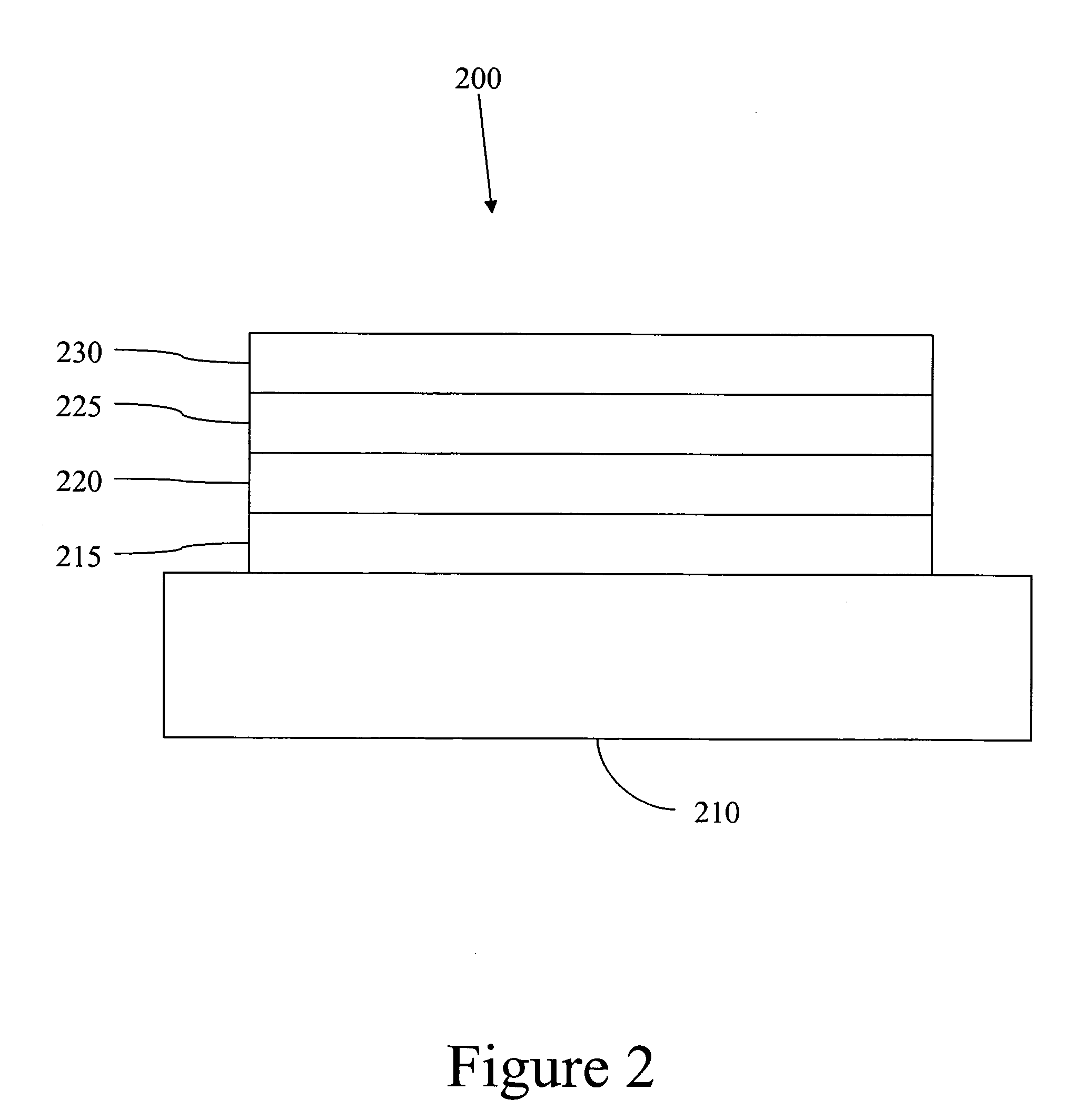Materials and architectures for efficient harvesting of singlet and triplet excitons for white light emitting OLEDs
- Summary
- Abstract
- Description
- Claims
- Application Information
AI Technical Summary
Benefits of technology
Problems solved by technology
Method used
Image
Examples
Embodiment Construction
[0023]Fluorescent organic light-emitting devices have an upper limit of approximately 25% for internal quantum efficiency (IQE), due to the requirement of spin-symmetry conservation. The alternative radiative process of phosphorescence has shown very high, even nearly 100% IQE. However, blue phosphorescent dopants with long lifetimes have not been achieved yet, which limits the device lifetime and thus the application potential of the three-color white OLED (WOLED) using red, green and blue phosphorescent dopants. Furthermore, in devices having only phosphorescent emitting materials, the exchange interaction energy is effectively lost, since phosphorescent materials emit light from spin-symmetric excitons (triplets) whose energy level is ˜0.8 eV lower than spin-antisymmetric excitons (singlets) in organic system. In the present invention, these deficiencies are overcome by using a fluorescent dopant to harness higher-energy singlet excitons for blue emission and phosphorescent dopan...
PUM
| Property | Measurement | Unit |
|---|---|---|
| Fraction | aaaaa | aaaaa |
| Electric charge | aaaaa | aaaaa |
| Energy | aaaaa | aaaaa |
Abstract
Description
Claims
Application Information
 Login to View More
Login to View More - R&D
- Intellectual Property
- Life Sciences
- Materials
- Tech Scout
- Unparalleled Data Quality
- Higher Quality Content
- 60% Fewer Hallucinations
Browse by: Latest US Patents, China's latest patents, Technical Efficacy Thesaurus, Application Domain, Technology Topic, Popular Technical Reports.
© 2025 PatSnap. All rights reserved.Legal|Privacy policy|Modern Slavery Act Transparency Statement|Sitemap|About US| Contact US: help@patsnap.com



